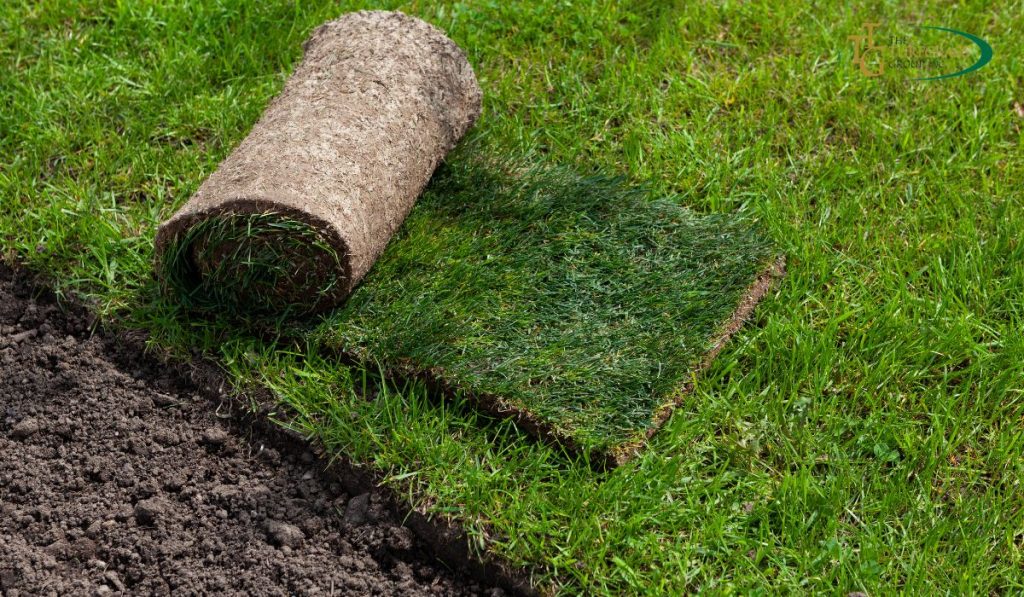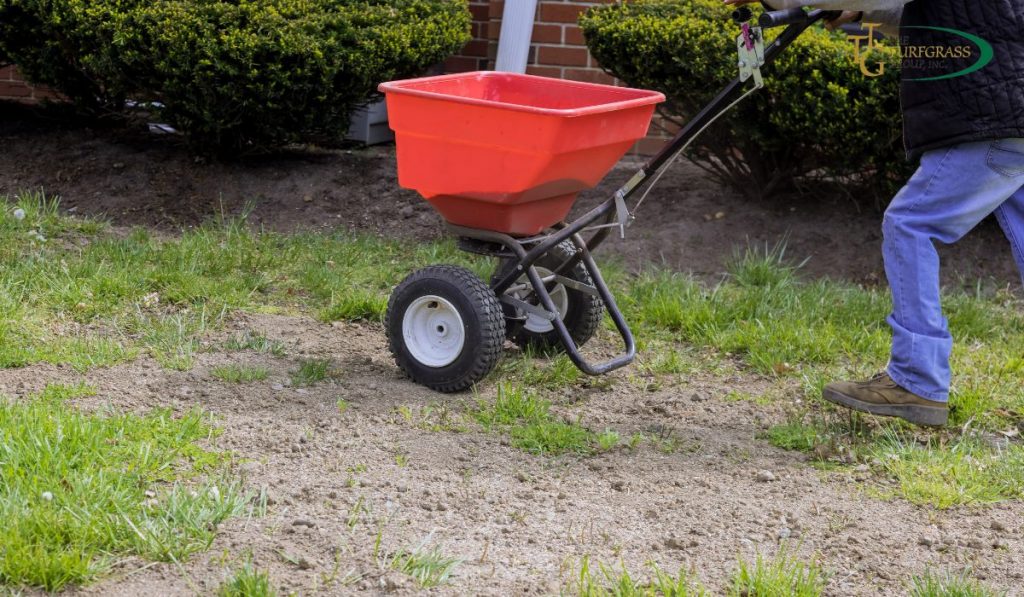
If you have a passion for landscaping and are interested in cultivating and selling turfgrass, becoming a licensed turfgrass producer can be a rewarding career path.
Turfgrass producers are responsible for growing and supplying high-quality grass for various applications, such as residential lawns, sports fields, and golf courses.
This article will outline the steps to becoming a licensed turfgrass producer, from acquiring the necessary knowledge and skills to navigating the licensing process.
Understanding the Turfgrass Industry
Turfgrass Production Overview
Turfgrass production involves cultivating and harvesting grass varieties specifically grown for their ability to form dense, durable, and aesthetically pleasing turf.
This turf is used in residential, commercial, and recreational settings to create attractive and functional landscapes.
Market Demand and Opportunities
The demand for high-quality turfgrass remains consistently strong, driven by the need for well-maintained lawns, sports fields, golf courses, and other outdoor spaces.
As a licensed turfgrass producer, you can tap into this market and provide customers with top-notch turfgrass products.
Acquiring Knowledge and Skills
Formal Education and Training
While not mandatory, obtaining a degree or certification in turfgrass management or a related field can significantly enhance your knowledge and credibility as a producer.
Many colleges and universities offer programs focused on turfgrass science, providing comprehensive coursework in areas such as turfgrass physiology, pest management, and business principles.
Practical Experience
Gaining hands-on experience in turfgrass production is invaluable.
Seek opportunities to work with established turfgrass producers, landscaping companies, or golf course maintenance teams.
Practical experience will deepen your understanding of turfgrass cultivation techniques, maintenance practices, and the challenges involved in the industry.

Continuous Learning and Networking
Stay updated on the latest trends, research, and advancements in turfgrass production by attending seminars, workshops, and conferences.
Engage with industry professionals, join associations, and participate in networking events to expand your knowledge base and build relationships within the turfgrass community.
Meeting Licensing Requirements
Research State Regulations
Different states have varying regulations and licensing requirements for turfgrass producers.
Research your state’s agricultural department or licensing board to understand the specific criteria, documentation, and procedures for obtaining a turfgrass production license.
Ensure that you comply with all the necessary regulations to operate legally.
Complete Required Documentation
Once you understand the licensing requirements, gather the necessary documentation.
This may include an application form, proof of education or experience, financial statements, and any other supporting materials requested by the licensing authority.
Carefully complete all forms and submit the required documents within the designated time frame.
Pass Examinations
Some states may require applicants to pass examinations to demonstrate their knowledge and competence in turfgrass production.
Study the examination materials provided by the licensing authority and prepare thoroughly.
Passing the test is crucial for obtaining your turfgrass production license.
Establishing a Turfgrass Production Operation
Securing Land and Resources
Identify suitable land for your turfgrass production operation.
Consider factors such as soil quality, drainage, accessibility, and proximity to your target market.
Acquire or lease the land and ensure you have sufficient resources, such as water supply and infrastructure, to support your production needs.
Developing a Business Plan
Create a comprehensive business plan that outlines your production goals, target markets, marketing strategies, financial projections, and operational procedures.
A well-crafted business plan will guide your decision-making, help secure financing if needed, and provide a roadmap for the growth and success of your turfgrass production venture.
Procuring Equipment and Supplies
Invest in the necessary equipment and supplies for turfgrass production.
This may include seeding machines, irrigation systems, mowing equipment, and storage facilities.
Ensure all equipment is in good working condition and regularly maintained to maximize efficiency and productivity.
Growing and Maintaining Turfgrass
Seed Selection and Sourcing
Choose high-quality turfgrass seed varieties suitable for your target market and local climate conditions—partner with reputable seed suppliers to ensure the reliability and consistency of your seed sources.
Conduct regular quality control checks to maintain the excellence of your turfgrass products.
Propagation and Cultivation Techniques
Follow proven propagation and cultivation techniques to establish healthy and robust turfgrass.
This includes proper seedbed preparation, sowing methods, fertilization, irrigation, and pest control.
Implement regular maintenance practices such as mowing, aerating, and overseeding to promote turf health and vigor.
Implementing Proper Maintenance Practices
Maintain proper turfgrass care throughout the growth cycle.
This includes regular watering, fertilization, weed control, and disease prevention measures.
Stay updated on best practices and scientific advancements in turfgrass maintenance to ensure your turfgrass products’ highest quality and aesthetics.
Marketing and Selling Turfgrass
Identifying Target Markets
Identify and analyze your target markets, such as residential homeowners, landscaping companies, golf courses, and municipalities.
Understand their specific needs, preferences, and budgetary considerations to effectively tailor your marketing and sales strategies.
Creating a Marketing Strategy
Develop a marketing strategy to promote your turfgrass products.
This may include creating a professional website, utilizing social media platforms, attending trade shows, and implementing targeted advertising campaigns.
Highlight your turfgrass’s unique qualities and benefits, such as its durability, visual appeal, and environmental friendliness.
Building Relationships with Customers
Nurture strong customer relationships by providing excellent customer service, reliable delivery, and ongoing support.
Respond promptly to inquiries, address any concerns, and maintain open lines of communication.
Satisfied customers can become repeat buyers and serve as valuable referrals for your business.
Conclusion
Becoming a licensed turfgrass producer requires knowledge, practical experience, and adherence to licensing requirements.
By acquiring the necessary skills, understanding state regulations, and establishing a well-planned operation, you can successfully cultivate and supply high-quality turfgrass to meet the demands of various markets.
Remember to prioritize continuous learning, stay updated on industry advancements, and provide exceptional customer service to thrive in the turfgrass production industry.
FAQs
Q: Is a license necessary to become a turfgrass producer?
A: Yes, licensing requirements vary by state, and it is essential to comply with the specific regulations in your area to operate legally.
Q: Can I start a turfgrass production business without formal education?
A: While formal education is not mandatory, it can significantly benefit your knowledge and credibility in the industry. Practical experience and continuous learning are equally important.
Q: How long does it take to establish a turfgrass production operation?

A: The timeline can vary depending on factors such as land acquisition, equipment procurement, and establishment of turfgrass growth. Create a realistic timeline in your business plan.
Q: How do I find reliable turfgrass seed suppliers?
A: Research reputable seed suppliers in your region, seek recommendations from industry professionals, and request samples to assess the quality and performance of their seeds.
Q: What marketing strategies are effective for promoting turfgrass?
A: Combining online presence, targeted advertising, attending industry events, and building strong customer relationships can help effectively market and sell your turfgrass products.